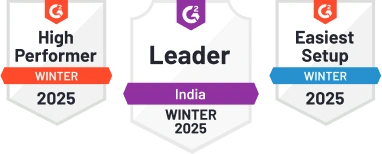Key Responsibility Areas (KRA) & Key Performance Indicators (KPI) for Systems Support Engineer
1. Technical Troubleshooting and Issue Resolution
KRA: Responsible for identifying and resolving technical issues promptly to ensure minimal downtime.
Short Description: Ensuring seamless technical operations.
- 1. Average time taken to resolve technical issues.
- 2. Percentage of issues resolved within SLA.
- 3. Customer satisfaction rating post-issue resolution.
- 4. Number of recurring issues identified and addressed.
2. System Maintenance and Updates
KRA: Regular maintenance and updates to ensure system performance and security.
Short Description: Keeping systems up-to-date and secure.
- 1. Adherence to scheduled maintenance tasks completion.
- 2. Percentage of systems updated within defined timelines.
- 3. Security vulnerability assessment and mitigation completion rate.
- 4. Feedback from stakeholders on system performance post-updates.
3. User Training and Support
KRA: Providing user training and support for efficient system utilization.
Short Description: Empowering users with system knowledge.
- 1. Number of user training sessions conducted.
- 2. User feedback rating on training effectiveness.
- 3. Percentage decrease in user-reported issues post-training.
- 4. Average time taken to respond to user support requests.
4. System Performance Monitoring
KRA: Monitoring system performance metrics to proactively identify and address potential issues.
Short Description: Ensuring optimal system performance.
- 1. System uptime percentage over a defined period.
- 2. Number of performance incidents detected and resolved proactively.
- 3. Performance improvement initiatives implemented and their impact measured.
- 4. Feedback from IT team on the effectiveness of performance monitoring processes.
5. Infrastructure Management
KRA: Managing and optimizing IT infrastructure to support organizational goals.
Short Description: Efficiently managing IT resources.
- 1. Infrastructure cost optimization percentage achieved.
- 2. Infrastructure downtime hours reduced compared to previous periods.
- 3. Feedback from department heads on infrastructure support quality.
- 4. Implementation of infrastructure scalability plans as per business growth projections.
6. Incident Response and Escalation
KRA: Timely response to incidents and effective escalation when required.
Short Description: Ensuring swift incident resolution.
- 1. Average time taken to acknowledge incidents.
- 2. Percentage of incidents resolved without escalation.
- 3. Incident escalation process adherence rate.
- 4. Feedback from stakeholders on incident handling efficiency.
7. Documentation and Knowledge Management
KRA: Maintaining accurate system documentation and knowledge base for easy reference.
Short Description: Ensuring information accessibility.
- 1. Completeness and accuracy rating of system documentation.
- 2. Knowledge base search time reduction percentage.
- 3. Number of knowledge sharing sessions conducted within the team.
- 4. Feedback from team members on the usefulness of documentation and knowledge base.
8. Vendor Management
KRA: Managing relationships with IT vendors to ensure timely support and service delivery.
Short Description: Effective vendor partnerships.
- 1. Vendor response time adherence for support requests.
- 2. Vendor service level agreement compliance rate.
- 3. Vendor performance evaluation scores from internal stakeholders.
- 4. Cost-saving initiatives implemented through vendor negotiations.
9. Compliance and Security Adherence
KRA: Ensuring compliance with IT security policies and regulations.
Short Description: Upholding IT security standards.
- 1. Compliance audit success rate.
- 2. Number of security incidents reported and resolved.
- 3. Employee training completion rate on security protocols.
- 4. Feedback from compliance officers on adherence to regulations.
10. Continuous Improvement Initiatives
KRA: Driving continuous improvement initiatives to enhance system efficiency and effectiveness.
Short Description: Fostering a culture of improvement.
- 1. Number of process improvement projects implemented.
- 2. Time and cost savings achieved through improvement initiatives.
- 3. Employee engagement in suggesting and implementing improvements.
- 4. Feedback from stakeholders on the impact of improvement projects.
Real-Time Example of KRA & KPI
Example: Incident Response and Escalation
KRA: Timely response to incidents and effective escalation when required.
- KPI 1: Average time taken to acknowledge incidents reduced by 20% after implementing a new incident ticketing system.
- KPI 2: 95% of incidents resolved without escalation, showcasing efficient troubleshooting capabilities.
- KPI 3: Incident escalation process adherence rate improved to 98% through regular training sessions.
- KPI 4: Stakeholder feedback indicated a 15% increase in satisfaction with incident handling efficiency.
These KPIs led to improved incident resolution times, reduced escalations, enhanced process adherence, and increased stakeholder satisfaction.
Key Takeaways
- KRA defines what needs to be done, whereas KPI measures how well it is done.
- KPIs should always be SMART (Specific, Measurable, Achievable, Relevant, Time-bound).
- Regular tracking and adjustments ensure success in Systems Support Engineer.







